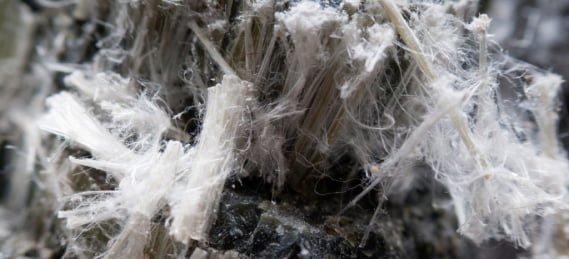Asbestos
Asbestos
Asbestos is a mineral group that occurs naturally as fiber bundles. These fibers can be found in soil and rocks all around the planet. They are mostly composed of silicon and oxygen, but other elements are present. Asbestos is classified into two types: Chrysotile and amphibole. Both of which have been linked with cancer. In fact, the American Cancer Society goes as far as to say that “there is no ‘safe’ type of asbestos in terms of lung cancer risk.”
Because asbestos fibers are robust, resistant to heat and many chemicals, and do not carry electricity, they can be beneficial. As a result, asbestos has been utilized as an insulator since antiquity. Asbestos has been used to insulate factories, schools, homes, and ships. It has also been used to manufacture vehicle brake and clutch parts, roofing shingles, ceiling and floor tiles, cement, textiles, and hundreds of other items since the industrial revolution.
Findings
Studies have emphatically found that all forms of asbestos can increase the risk of pleural plaques and malignancy, including chrysotile asbestos. While there is debate over the role of chrysolite asbestos in the development of pleural plaques and malignancy, the opposition is mainly composed of producers of products that still allow the export of asbestos-containing products. Regardless, there is certainly enough evidence to support litigation in various suits surrounding the use of asbestos. For instance, asbestos exposure accounts for up to 80% of the known cases of mesothelioma, a rare form of cancer that attacks the smooth lining of the chest, lungs, heart, and abdomen.
Litigation Status
The majority of asbestos manufacturers have long gone bankrupt but not before courts forced them to set up over $30 billion in trust funds to compensate those who developed mesothelioma from their products. Although this began in the 1980s, litigation is still ongoing with funds still available.
More recently, however, cosmetic talc, often linked to asbestos fibers, has been the new asbestos buzzword. According to filings with the U.S. Securities and Exchange Commission, Colgate-Palmolive faces over 170 claims that its products are contaminated with asbestos. It’s extremely likely that asbestos contamination claims around the use of cosmetic talc will be a continuously growing area of litigation.
Expert Witness Opportunities
Medical specialists once again find their way to the top of opportunities for expert testimony in this litigation, namely medical toxicologists, oncologists, and pulmonologists. An expert in medical toxicology would be able to opine on the broad scope of indications for testing for asbestos exposure, as well as the risks and complications of which they are aware from the literature and from personal experience in treating patients with work-related illnesses.
Similarly, an expert in oncology would be able to opine on the broad scope of indications for the treatment of mesotheliomas and other lung cancers, as well as the risks and complications of which they are aware from the literature and from personal experience in treating cancer patients. Finally, an expert in pulmonology would be able to opine on the broad scope of indications for evaluating pleural plaques, as well as the risks and complications of which they are aware from the literature and from personal experience in treating patients with pulmonary disease.
Get Help now!
If you or a loved one have been injured, you may be eligible for a lawsuit. A lawsuit can help recover damages for medical costs, pain and suffering, and more.
Contact us today for a free, no-obligation legal review.

